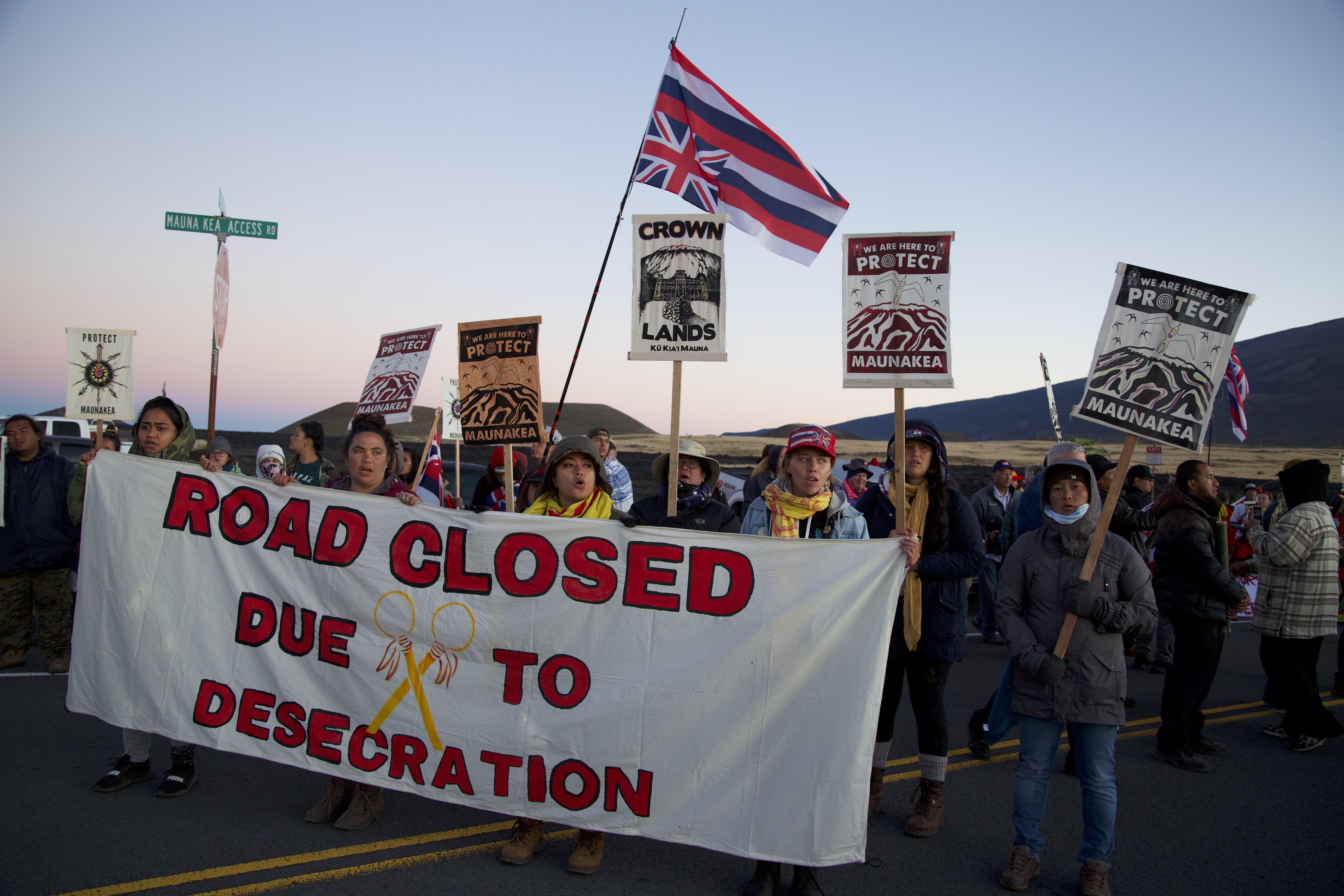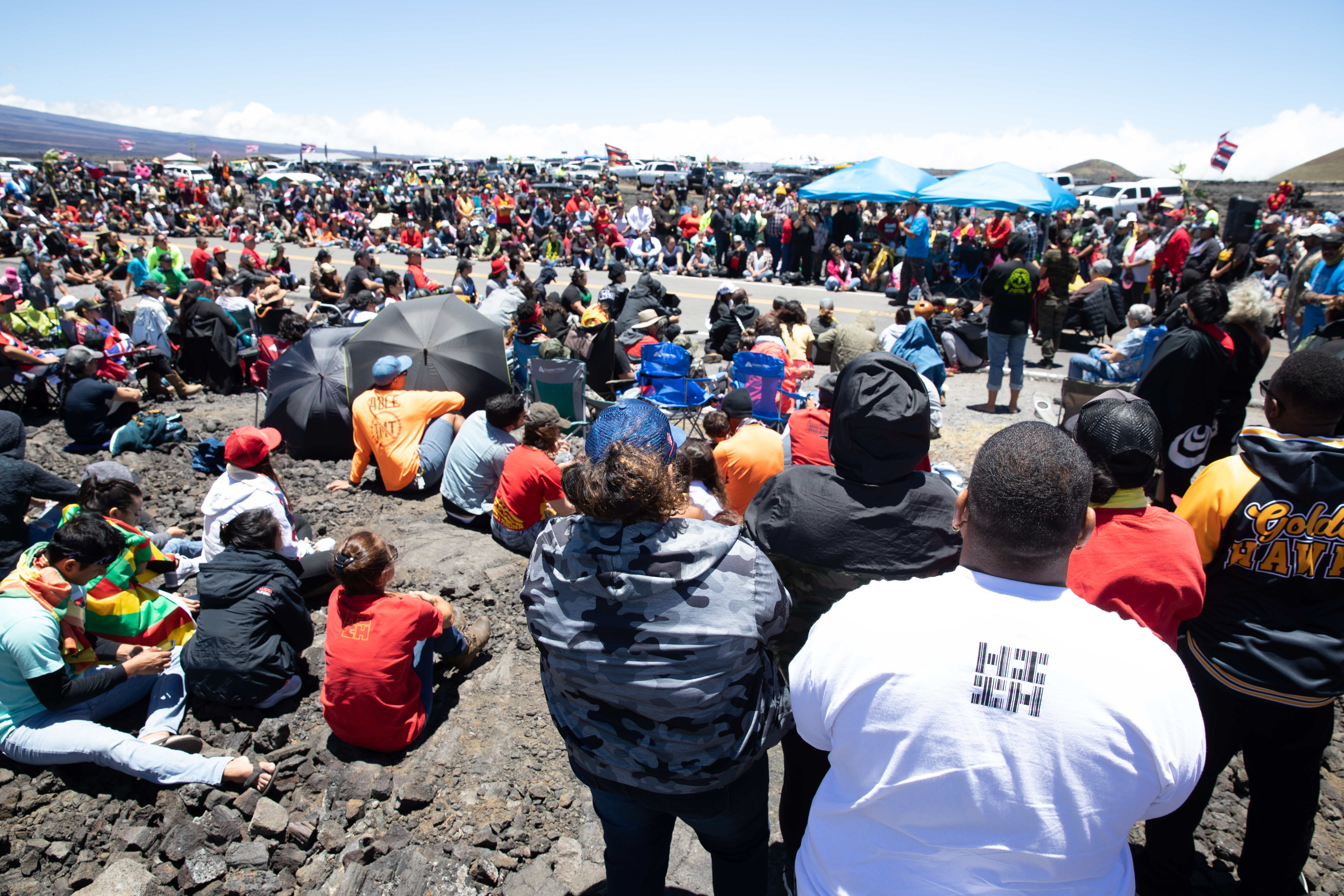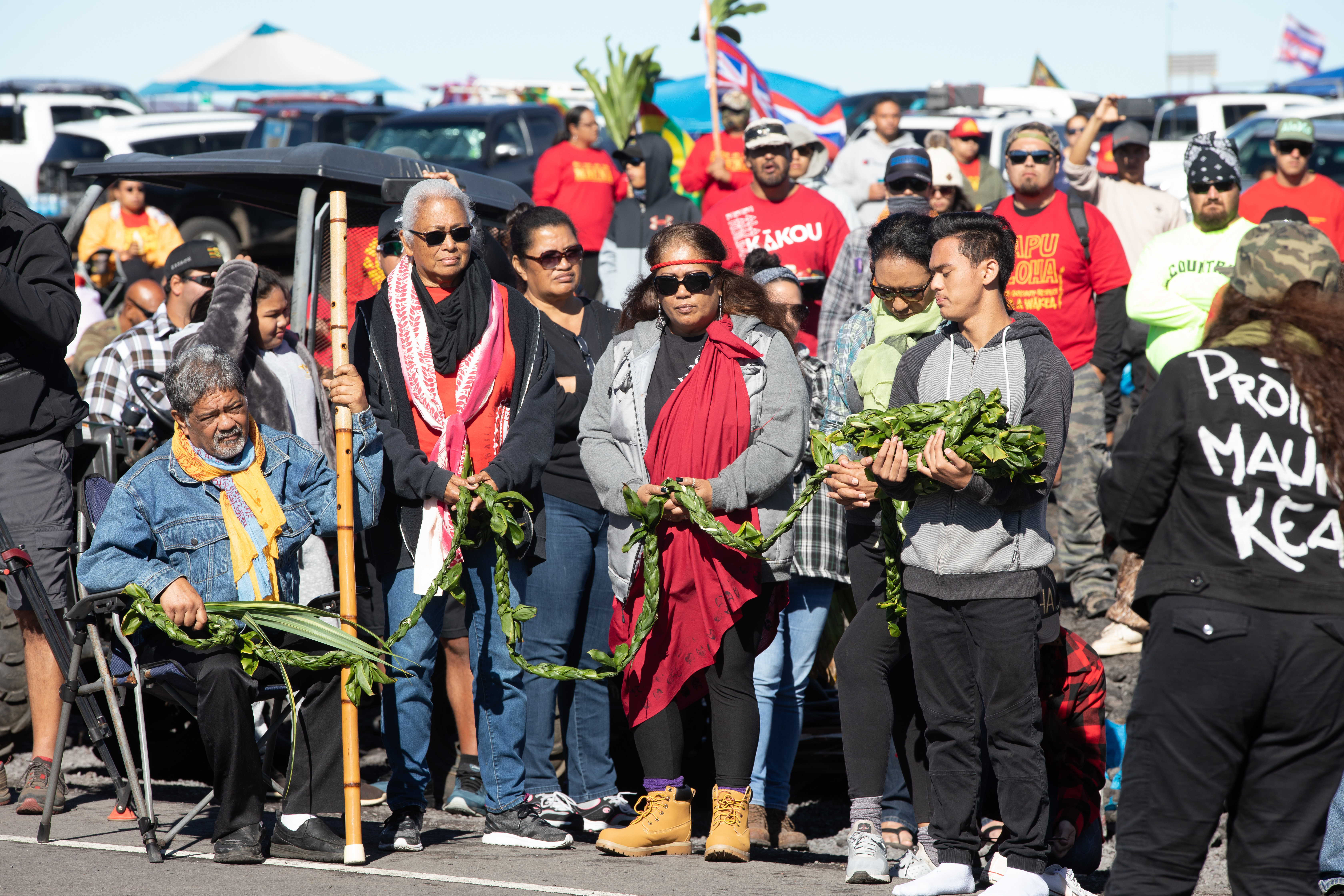
In case you see a bunch of people wearing red and carrying signs at the Huntington Beach Pier this Saturday, Aug. 3, you might want to stop for a bit and listen to them. Though the events that spurred them to speak out in public are taking place 2,500 miles away, they are very relevant to everyone here, especially in California.
The immediate issue is the construction of the Thirty Meter Telescope (TMT) on the summit of Mauna Kea, one of the highest mountains in the world and a sacred place to the Kanaka Maoli (Native Hawaiians). Though there are already many scopes atop Mauna Kea, and the TMT has been in development since 2000 (the University of California has long had a stake in the project), though construction was halted back in October 2014 by protests and lawsuits.
Construction was due to restart a couple weeks ago, but then thousands of kia`i (protectors) descended on Mauna Kea from all over the U.S., and the world. Many flew an upside-down Hawai`i state flag, which has long been a symbol of Hawaiian sovereignty. There, they formed not just an encampment, but an entire community, known as Pu`uhonua o Pu`uhuluhulu, complete with food, medical services, and a fully functioning university, with dozens of classes in Hawaiian language, culture, and history.
Hawai`i Governor David Ige declared an emergency (though protests on the mountain have remained completely non-violent) and arrests began. Things went downhill fast for the State of Hawai`i after images of cops–many of whom have Native Hawaiian lineage–arresting kūpuna (elders) in wheelchairs were broadcast across the state. Since then, Ige has rescinded his emergency declaration and temporarily halted further construction for another two years, but the matter is far from being resolved.

“For myself—and, I imagine, most Native Hawaiians—this is just another reminder of how our rights, lands, bodies, culture, and traditions are sacrificed for other interests,” said Josiah David Hester, an associate professor of computer engineering at Northwestern University in this Columbia Journalism Review story on the protests. “This is not just about Mauna Kea being sacred; it is about repeated erosion of Native rights over the past half-century, and taking a stand to try and stop the bleeding.”
Ever since the overthrow of the Hawaiian kingdom in 1893, then the annexation of the white supremacist “Hawaiian Republic” (in which native-born Kanaka were not recognized as citizens) by the U.S. in 1898, Native Hawaiians have been screwed over on their own islands. Today, the TMT is seen as one more insult, one more instance where they were forced to play by rules they didn’t write or consent to, and now must once again accept the consequences of being a minority in a nation they never voluntarily agreed to join.
Direct action against the TMT has taken off throughout Hawai`i over the last few weeks, and has started spreading to the continental U.S. Like the fight over the U.S. Navy’s use of the island of Kaho`olawe as a bombing range (which shattered the island’s water table, rendering it all but uninhabitable now) back in the 1970s, the construction of the TMT has become a rallying cry for an entirely new generation of Native Hawaiian activists.

“People don’t really understand how much our people had to give up,” said Native Hawaiian activist Kamaha`o Kawelu in the above CJR article. “We gave up our beaches to resorts. Our heiau (temples) were taken from us and destroyed. Everything we had was taken from us and exploited for profit and geared towards tourism. What we as a people want everyone to realize is that we’re not anti-science—our kūpuna (ancestors) voyaged the Pacific using just the elements and the stars. We’re anti-location.”
The TMT protest at the Huntington Beach pier will start at noon on Saturday, Aug. 3.
Anthony Pignataro has been a journalist since 1996. He spent a dozen years as Editor of MauiTime, the last alt weekly in Hawaii. He also wrote three trashy novels about Maui, which were published by Event Horizon Press. But he got his start at OC Weekly, and returned to the paper in 2019 as a Staff Writer.


MAHALO TO OC WEEKLY AND PIGNATARO FOR SPREADING THE WORD.. After two hundred years of our Hawaiian culture’s desecration…our lands stolen, our beaches, our ocean, our jobs, even NA IWI, our ancestor bones crushed in resort construction, Na kanaka Maole have said ‘ENOUGH.’
IMUA NUI KAKOU! Our sacred Mauna Kea is safe. The TMT will not be built. Ke Akua the gods are marching with us. Our kupuna, elders, and our keiki, our coming generation, are marching, too. We will not back down. ONIPA’A! KAPU ALOHA!
Kiana Mapuana Davenport (Author, Shark Dialogues)
Sounds like a noble enough cause I suppose, but very unfortunate that they would choose to stop construction of an instrument for the advancement of scientific knowledge in order to suddenly assert themselves. Maybe not by sheer coincidence. Maybe construction will continue after payment of some kind of reparations to those who feel slighted.
What bollocks. From the Finding of Fact after the protesters (note, not protectors, just protesters) had their day in court:
The TMT site and its vicinity were not used for traditional and customary native Hawaiian
practices conducted elsewhere on Mauna Kea, such as depositing piko, quarrying rock for adzes,
pilgrimages, collecting water from Lake Waiau, or burials. The site is not on the summit ridge,
which is more visible, and, according to most evidence presented, more culturally important than
the plateau 500 feet lower where TMT will be built.
Some groups perform ceremonies near the summit. The evidence shows that these ceremonies
began after the summit access road and first telescopes were built, but, in any case, the TMT will
not interfere with them.
Individuals testified that seeing the TMT will disturb them when they are doing ceremonies or
other spiritual practices. The TMT cannot be seen from the actual summit or from many other
places on the summit ridge. Where it would be visible, other large telescopes are already in
view. It will not block views from the summit ridge of the rising sun, setting sun, or Haleakalā.
Some native Hawaiians expressed that Mauna Kea is so sacred that the very idea of a large
structure is offensive. But there are already twelve observatories on Mauna Kea, some of them
almost as large as the TMT. They will remain even if the TMT is not built. No credible evidence
was presented that the TMT would somehow be worse from a spiritual or cultural point of view
than the other large observatories. Each observatory received a permit after a process allowing
public participation and judicial review, over a period spanning three decades.
iii
To the extent that the belief that Mauna Kea is too sacred to allow large structures is a religious
one, under the federal and state constitutions a group’s religious beliefs cannot be given veto
power over the use of public land.
Other witnesses, including some native Hawaiians, embrace a different way of thinking and
feeling about the TMT: as a project that honors Mauna Kea rather than injures it. After a
worldwide search, scientists found that Mauna Kea is the best site on earth for the most advanced
telescope ever built. Mauna Kea will forever be known throughout the world as the site of
profound discoveries about the universe. These witnesses see TMT and the other telescopes, not
as objects spoiling the landscape, but as portals to discovery placed in this site made ideal for
them.
To these witnesses, respect for Mauna Kea can be reconciled with modern astronomy. When
ancient Hawaiians found a resource valuable to them – the densest rock in Hawai‘i – near the
summit of Mauna Kea, they made use of it, quarrying hundreds of acres. Ancient Hawaiians
intensely studied the stars in ways consistent with their technology. Traditional Hawaiian
navigation depended upon knowledge of the stars.
King David Kalākaua enthusiastically supported astronomy in Hawai‘i. He wrote: “It will afford
me unfeigned satisfaction if my kingdom can add its quota toward the successful
accomplishment of the most important astronomical observation of the present century…”
TMT will contribute $1 million a year toward education, and has signed a sublease agreement
committing $300,000/yr. at first, increasing to $1 million/yr., for conservation on Mauna Kea.
No existing observatory makes any such contributions
Hmm science or religion… I’m in favor of progress, not holding on to the past. Let them build their telescope. Get over it.
TMT and the corporations in China, India, Canada, Japan and California that are funding it are welcome to build on top of heritage sites on their own lands. The Great Wall of China, Yosemite, Mt. Fuji all would be great places to build a stadium sized telescope.
I’m in dote on with the cbd products and https://organicbodyessentials.com/products/cbd-sample-pack ! The serum gave my shell a youthful help, and the lip balm kept my lips hydrated all day. Meaningful I’m using moral, simpleton products makes me feel great. These are now my must-haves in support of a unorthodox and nourished look!